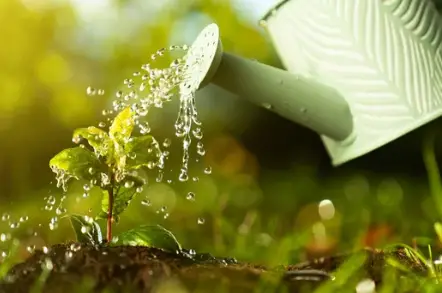Seeds are extraordinary capsules of life, containing the potential to grow into magnificent plants.
They serve as the foundation for plant growth, playing a crucial role in sustaining our ecosystem.
Have you ever wondered why seeds need water to grow?
In this blog post, we will explore the essential role of water in seed germination and growth, unraveling the fascinating journey from dormancy to vibrant life.

Seed Structure and Dormancy
Before we delve into the significance of water, let’s understand the intricate structure of a seed. seeds consist of protective layers, including the seed coat, endosperm, and embryo.
Each layer serves a specific purpose, safeguarding the delicate embryo from external pressures and providing nourishment during early development.
Seeds also possess a remarkable ability called dormancy, a state of suspended growth that allows them to endure unfavorable conditions such as drought, extreme temperatures, or limited light. However, for germination to occur, seeds require the right environmental cues to break their dormancy.
Water as an Activator

Water acts as a powerful activator for seeds. Through a process called imbibition, seeds absorb water, initiating a series of transformative events.
As water penetrates the seed coat, the cells within the seed become hydrated, triggering metabolic processes. This hydration activates enzymes that were dormant during dormancy, kickstarting biochemical reactions essential for growth.
Water also plays a critical role in the release of stored reserves within the seed, such as proteins, starches, and lipids. These reserves provide the necessary energy and nutrients for the seedling’s initial growth and development.
Hydration and Biochemical Changes
Once the seeds have imbibed water, remarkable biochemical changes take place. Enzymes responsible for breaking down complex compounds, such as starches, into simpler forms are activated.
This enzymatic activity converts starches into sugars, which serve as a crucial energy source for the emerging seedling. Water also acts as a catalyst for various metabolic reactions, enabling the efficient utilization of nutrients stored in the seed.
Moreover, water facilitates the transport of these nutrients to the growing regions within the seedling, supporting its overall development.
Water and Seedling Development
As germination progresses, water continues to play a pivotal role in seedling development. It enables the elongation and expansion of cells, leading to the emergence of the young plant from the seed coat.
Water-driven turgor pressure within the cells provides the necessary force for seedling emergence, pushing through the soil and toward the light. Additionally, water supports the development of the root system, allowing the seedling to anchor itself and absorb water and nutrients from the soil.
Simultaneously, water aids in the development of the shoot system, promoting the growth of stems, leaves, and ultimately, photosynthetic capabilities. It also assists in the regulation of temperature within the plant, helping to maintain optimal growth conditions.
Water and Environmental Factors
Water availability profoundly influences seed germination and subsequent growth. The timing and amount of watering are crucial to provide adequate moisture without drowning the seeds or seedlings.
Proper watering techniques, such as watering from below or using misting systems, can help prevent waterlogging and ensure the even distribution of moisture.
Also, water quality, including its pH and mineral content, affects the health and vigor of the developing seedlings. Poor water quality can hinder nutrient uptake or introduce toxins to the plants.
Furthermore, environmental factors like temperature and humidity also impact seed germination, with water playing a vital role in maintaining the optimal conditions for growth. Water acts as a buffer against extreme temperature fluctuations and helps create a suitable microclimate around the seed or seedling.
Conclusion
Water is an indispensable element for seed germination and growth.
It acts as a catalyst, activating dormant seeds and triggering vital biochemical changes.
Through hydration, water enables the release of stored reserves, providing the necessary energy and nutrients for initial growth.
It supports seedling development, facilitating cell elongation, nutrient transport, and the establishment of root and shoot systems.
Proper water management is essential to ensure the health and vigor of seeds and seedlings, including appropriate watering techniques, timing, and attention to water quality.
By appreciating the vital role of water in this remarkable process, we can foster sustainable plant growth and contribute to a greener, healthier world.
Let us cherish the power of water and nurture the incredible journey of seeds as they transform into vibrant life, sustaining the beauty and diversity of our planet.




